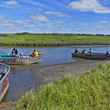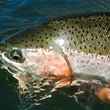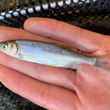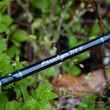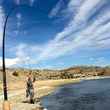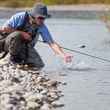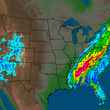Grayling, once abundant throughout much of Michigan and Montana, are now virtually extinct from their natural range in the lower 48. Grayling once populated rivers on both the upper and lower peninsula in Michigan, and were historically found in the Sun River, Smith River, Gallatin River, Madison River, Red Rock-Beaverhead-Jefferson Rivers, and Big Hole River in Montana. Today, fluvial (river dewlling) grayling are now completely extirpated from their former range in Michican and exist only in the Big Hole River drainage in Montana, although their non-fluvial, lacustrine bretheren have been artificially introduced into many high elevation lakes in the contiguous United States. Though numerous factors have contributed to the grayling's demise, declining water quality throughout the rivers and streams of the grayling's normal range is considered primarily to blame.
Grayling, which are their own subfamily of the salmon family (not part of the whitefish subfamily, as they are commonly thought to be) and a distant relative of trout, are incredibly sensitive to changes in water quality. Grayling require swift-flowing, clean, well-oxygenated cold water rivers and streams which are typically lined with sandy or gravely bottoms. Due to their sensitivity to water quality, grayling are often considered indicator species. In waters where grayling have previously or continue to persist, declining grayling populations are closely correlated with and often signal the existence of water quality issues.





